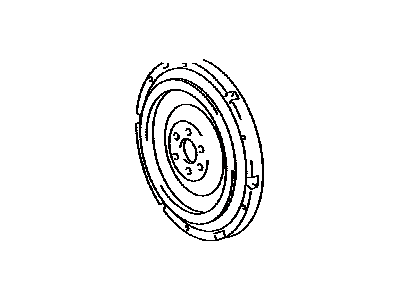

My Garage
My Account
Cart
Genuine Toyota Land Cruiser Flywheel
Clutch Flywheel- Select Vehicle by Model
- Select Vehicle by VIN
Select Vehicle by Model
orMake
Model
Year
Select Vehicle by VIN
For the most accurate results, select vehicle by your VIN (Vehicle Identification Number).
3 Flywheels found
Toyota Land Cruiser Flywheel
If you are in demand for superior quality and affordable OEM Toyota Land Cruiser Flywheel, then shop with us! We own a wide range of the reduced-priced genuine Toyota Land Cruiser Flywheel. You can purchase in confidence as all parts come with a manufacturer's warranty. Any issues with our products? No need to worry as we have a hassle-free return policy to guide you every step of the way.
Toyota Land Cruiser Flywheel Parts Questions & Experts Answers
- Q: How to remove and install the flywheel/driveplate in DOHC engine on Toyota Land Cruiser?A:To remove the transmission, raise the vehicle and support it securely on jackstands, then remove the pressure plate and clutch disc if equipped with a manual transmission. Use a center punch or paint to make alignment marks on the flywheel/driveplate and crankshaft to ensure correct alignment during reinstallation. Remove the bolts securing the flywheel/driveplate to the crankshaft, and if the crankshaft turns, wedge a screwdriver in the ring gear teeth to hold the flywheel/driveplate. Carefully remove the flywheel/driveplate from the crankshaft, supporting it while removing the last bolt, and keep any spacers from automatic transmission equipped vehicles with the driveplate. Clean the flywheel/driveplate to remove grease and oil, inspecting the surface for cracks, rivet grooves, burned areas, and score marks, with light scoring removable using emery cloth. Check for cracked or broken ring gear teeth and lay the flywheel/driveplate on a flat surface to check for warpage. Clean and inspect the mating surfaces of the flywheel/driveplate and the crankshaft, replacing the crankshaft rear seal if leaking before reinstalling. Position the flywheel/driveplate against the crankshaft, aligning the marks made during removal, and apply thread-locking compound to the bolt threads before installation. Wedge a screwdriver in the ring gear teeth to prevent turning and tighten the bolts to the specified torque, following a criss-cross pattern and working up to the final torque in three or four steps. The remainder of the installation follows the reverse of the removal procedure.











